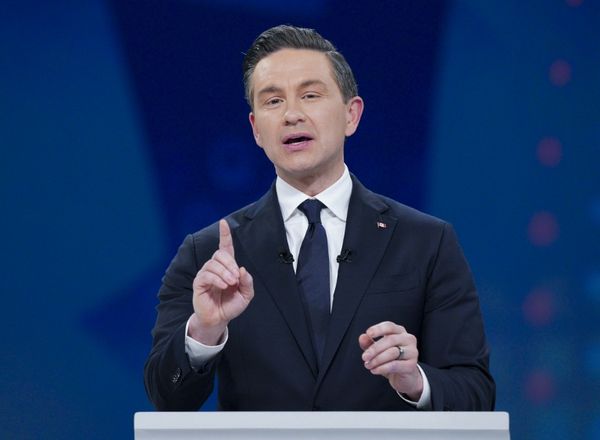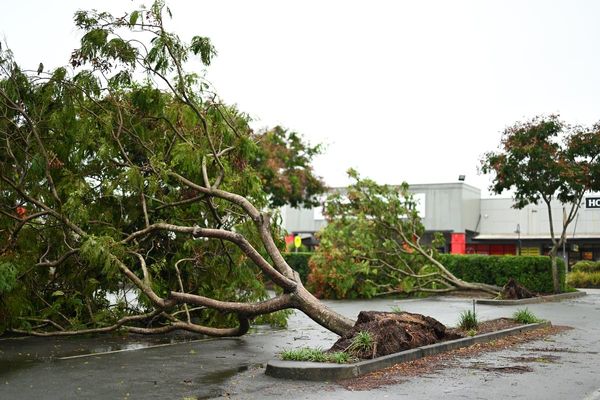
With the shadow of the war in Ukraine to its east, the Baltic nation is seeking to reaffirm its ties with the West. The Season of Lithuania in France, running from September to December, will be an opportunity for Lithuania to anchor itself in the West with over 200 events programmed across France highlighting a vibrant culture based on liberal values that emerged after decades of Soviet domination.
In the centre of Lithuania’s capital Vilnius, a statue of the celebrated French writer Romain Gary (1914-1980) stands on a pedestal. The author of “Promise at Dawn”, who was born on that street, is depicted as a little boy clasping his hands to his heart and looking up at the sky.
Across the street stands a stunning white structure combining elements Renaissance and Baroque styles. The institution was formerly called the “Russian Drama Theatre of Lithuania”. But in the wake of Russia’s invasion of Ukraine, it was renamed “Old Theatre of Vilnius” in September 2022 after Lithuanian Culture Minister Simonas Kairys issued a decree for the name to reflect “modern Lithuanian statehood”.
The Season of Lithuania in France (SLF), programmed between September 12–December 12, 2024, will be a way for the Baltic state to display its vibrant culture through 200 events taking place across France.
Beneath its defiant veneer – displayed via Ukrainian flags fluttering across Vilnius and a banner on a high-rise proclaiming, "Putin, the Hague is waiting for you” – Lithuania is wary of Russia. By turning toward the West, the tiny northern European country hopes to ensure that allies in the European Union (EU) do not remain indifferent in case of any future foreign aggression.
Read more'A fight for your way of life’: Lithuania's culture minister on Ukraine and Russian disinformation
“Culture is everything; it’s the thing that makes us a country, with our traditions and with our heritage. Culture ensures our democratic values,” said Kairys. “When countries like France have the possibility to have an impact on the development of the EU, please use our countries [the Baltic countries]. We are the biggest optimists among all the EU countries when it comes to belonging to the EU, and to the future of the EU.”
An attempt to restore historical justice
An overarching goal of the SLF is to restore historical justice, since the Soviet occupation prevented Lithuanian artists from appearing in the collections of major Western museums. The Season's exhibition “Kazys Varnelis: An Optical Classicist from Lithuania” opened on September 13 at the Pompidou Centre of Modern Art in Paris.
In Vilnius, the Kazys Varnelis House–Museum is a 200-square-metre space used to display works by Varnelis.
The story of the artist is deeply rooted in Lithuanian culture and history. His mother was a weaver, and his father was a woodcarver of religious statues. Forced to flee Lithuania during World War II, Varnelis did not return to Soviet-occupied Lithuania, and emigrated to the United States in 1949.
Varnelis settled in Chicago, and found himself among thousands of other Lithuanian immigrants who were making a living through manual labour. He changed his destiny by creating ecclesiastical art and opening a stained-glass window workshop.
By the late 1960s and early 1970s, the artist was in full flower, producing complex geometric designs that evoked the traditional weaving patterns of rural Lithuania. If the curators of SLF wanted to highlight Varnelis as a master of Lithuanian art, it is also because of his experience as a war refugee and immigrant, an experience echoed by the overwhelming number of people who were compelled to leave their native land during and after the Second World War.
Aleksandra Kasuba (1923-2019) is another exiled artist who lived in New York and New Mexico for most of her career. She is widely considered a pioneer in stretching fabric to create fantastical morphologies, in what was a response to the rigid and masculine architectural designs typical throughout the 20th century. Her gorgeous tent structures will be displayed at the Carré d’Art–Musée d’Art Contemporain in Nimes in October.
Russia’s invasion of Ukraine, and its plundering of Ukrainian art museums amid the chaos, prompted some serious soul-searching at the National Museum of Lithuania (LNM). The imposing building, which overlooks the Neris River of Vilnius, was one of the first museums to be established in the country in 1855, and it houses a wide collection of written materials and artifacts.
Read moreArtwork rescued from Ukraine war displayed in Paris
Documents, artists sealed behind Iron Curtain
The Ukraine invasion led curators to ask, “what are the most important exhibits for our identity, without which we cannot exist?” explained Rūta Kačkutė, the museum’s CEO. “The sad story of the National Museum of Lithuania (LNM), and other museums in Lithuania, is that for 200 years [except for 25 years of independence in the 20th century] we were under Russian occupation in one way or another, whether it was through Russian imperialism or during Soviet times” said Kačkutė.
Many works vital to Lithuanian national identity are now in Russia. These include the Lithuanian Metrica, a collection of old documents from the Grand Duchy of Lithuania, when it was part of the Polish-Lithuanian Commonwealth lasting from 1569 to 1795. A large part of the extraordinary collection of official documents issued by the duchy over four centuries is no longer in Lithuania but in Russia, “probably in its national archives”, said Kačkutė.
The museum director remembered that even when Lithuania had a better relationship with Russia, “We were not allowed to go and have a look, even as scientists.”
In Soviet times, “Lithuanian artists were sealed behind the Iron Curtain, and they were not participating in the dialogue of ideas,” said Milda Ivanauskienė, director at the MO Museum in Vilnius, Lithuania.
“Lithuanian art from 1960 to the present day” at the Centre Pompidou will exhibit the artists working in the 1950s, ’60s and ‘70s, “to bring back voices that were not there at the time”, said Ivanauskienė.
Lithuania broke free from Soviet occupation in 1990. One of the most evocative pieces created during this decade was initially presented as a living sculpture. The work "For Guilty without Guilt. Trap. Expulsion from Paradise" (1996) by contemporary artist Eglė Rakauskaitė presents thirteen teenage girls dressed in lacy white dresses and oversized men’s jackets. Their braided hair forms a net limiting their mobility.
After several minutes, the girls detach themselves with scissors in a rush of freedom. Rakauskaitė depicts the symbolic liberation of women from the patriarchal order and their Christian upbringing. Rebelling against tradition leads to consequences – “expulsion from paradise”, as evoked by the title. A video of the performance art is part of the collection on display at Pompidou Centre during the Season.
Lithuania de-Russifies itself
Lithuania today is a nation of 3 million citizens, and it has been part of NATO and the EU for 20 years. The annexation by Russia of Crimea (whose population of 2.4 million is just slightly smaller than Lithuania’s) had a chilling effect on the Baltic state, and the invasion of Ukraine only reinforced Lithuanian society’s desire to limit Russian influence on Lithuanian culture.
In recent years, fewer Russian books have been translated, Russian monuments and memorial plaques removed, and politicians have pursued a pronounced derussification policy, while aiming to anchor the small nation in the West.
In this context, Lithuanian poet Tomas Venclova noted that, “generally, Russia tends to be equated to the Soviet Union.” The poet, who was forced to emigrate to the US in the 1970s because of his dissident activities, added, “[President Vladimir] Putin‘s politics are disastrous – cynical, brutal, and anachronistic as well, and we should be sensitive to the danger it presents to our cultural tradition. But one should not exaggerate here. We have no right to take revenge on the same abject level, becoming 'Putinists in reverse'. Thankfully, Lithuanian cultural politics are still generally enlightened and not overly nationalist. Extremist voices tend to be balanced by restrained ones.”







